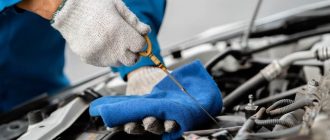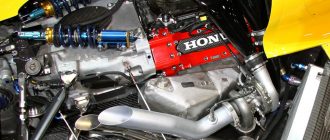What is inside a car engine?
A car engine is a complex machine that converts the chemical energy of gasoline into mechanical energy. This energy is then used to power the wheels of the car.
The main components of a car engine are:
- The cylinders: These are the chambers in which the gasoline is burned.
- The pistons: These are the moving parts that compress the gasoline and air mixture in the cylinders.
- The crankshaft: This is the shaft that converts the reciprocating motion of the pistons into rotary motion.
- The camshaft: This is the shaft that opens and closes the valves that allow the gasoline and air mixture into the cylinders.
- The spark plugs: These are the devices that create the spark that ignites the gasoline and air mixture.
- The fuel injector: This is the device that sprays the gasoline into the cylinders.
These are just the main components of a car engine. There are many other smaller parts that work together to make the engine run smoothly.
How does a car engine work?
The basic principle of a car engine is that it uses the expansion of gases to create motion. The gasoline and air mixture is compressed in the cylinders by the pistons. This compression creates heat and pressure. When the spark plugs ignite the mixture, it burns rapidly, creating even more heat and pressure. This pressure forces the pistons down, which in turn turns the crankshaft.
The crankshaft then converts the reciprocating motion of the pistons into rotary motion. This rotary motion is used to power the wheels of the car.
What are the different types of car engines?
There are many different types of car engines. The most common types are:
- Inline engines: These engines have the cylinders arranged in a straight line.
- V-engines: These engines have the cylinders arranged in a V-shape.
- Diesel engines: These engines use diesel fuel instead of gasoline.
- Rotary engines: These engines have a triangular rotor that spins instead of pistons.
Each type of engine has its own advantages and disadvantages. Inline engines are generally more efficient than V-engines, but V-engines are more compact. Diesel engines are more fuel-efficient than gasoline engines, but they are also more expensive. Rotary engines are very compact and lightweight, but they are not as efficient as other types of engines.
What are the future of car engines?
The future of car engines is uncertain. Some experts believe that electric cars will eventually replace gasoline-powered cars. Electric cars are more efficient and they produce no emissions. However, electric cars are still more expensive than gasoline-powered cars and they have a shorter range.
Other experts believe that hybrid cars will become more common. Hybrid cars use both a gasoline engine and an electric motor. This allows them to be more efficient than gasoline-powered cars and they can also travel longer distances on a single tank of gas.
Ultimately, the future of car engines will depend on the development of new technologies and the changing needs of consumers.
Conclusion
Car engines are complex machines that play a vital role in our transportation system. They have come a long way since the early days of the automobile, and they continue to evolve to meet the changing needs of consumers.




